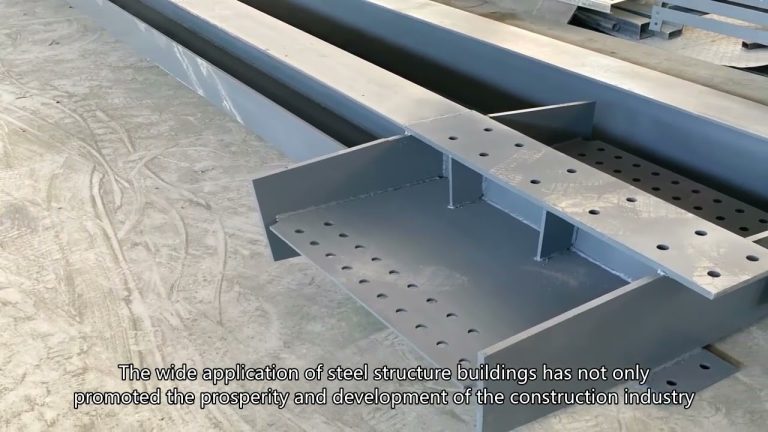The application of box house in medical service temporary occupancy
Table of Contents
Benefits of Using Box Houses for Temporary Medical Service Facilities
The use of box houses for temporary medical service facilities has become increasingly popular in recent years. These prefabricated structures offer a cost-effective and efficient solution for providing medical services in remote or disaster-stricken areas. Box houses are modular units that can be easily transported and assembled on-site, making them ideal for temporary medical facilities.

One of the key benefits of using box houses for temporary medical service facilities is their versatility. These structures can be customized to meet the specific needs of a medical facility, whether it be a clinic, hospital, or emergency response center. Box houses can be equipped with medical equipment, exam rooms, waiting areas, and even living quarters for medical staff. This flexibility allows for quick and efficient deployment of medical services in emergency situations.
In addition to their versatility, box houses are also cost-effective. Traditional brick-and-mortar buildings can be expensive and time-consuming to construct, especially in remote or disaster-affected areas. Box houses, on the other hand, are prefabricated off-site and can be quickly assembled on-site, saving both time and money. This cost-effectiveness makes box houses an attractive option for organizations looking to provide medical services in temporary locations.
Another benefit of using box houses for temporary medical service facilities is their durability. These structures are designed to withstand harsh weather conditions and can be easily transported to remote or hard-to-reach areas. This durability makes box houses an ideal choice for emergency response situations, where medical services may be needed in challenging environments.
Furthermore, box houses are environmentally friendly. These structures are often made from recycled materials and can be easily disassembled and reused in other locations. This sustainability makes box houses a responsible choice for organizations looking to minimize their environmental impact while providing essential medical services.
In addition to their practical benefits, box houses also offer a comfortable and safe environment for patients and medical staff. These structures can be equipped with heating, cooling, and ventilation systems to ensure a comfortable temperature inside. They can also be outfitted with security features to protect both patients and medical equipment.
Overall, the application of box houses in temporary medical service facilities offers a practical and efficient solution for providing medical services in remote or disaster-affected areas. These structures are versatile, cost-effective, durable, environmentally friendly, and provide a comfortable and safe environment for patients and medical staff. By utilizing box houses, organizations can quickly deploy medical services where they are needed most, helping to save lives and improve health outcomes in challenging situations.
Design Considerations for Box Houses in Medical Service Temporary Occupancy
Box houses, also known as modular or prefabricated houses, have gained popularity in recent years due to their cost-effectiveness, sustainability, and quick construction time. These structures are typically made off-site and then assembled on location, making them ideal for temporary occupancy in various industries, including medical services.
When it comes to using box houses in medical service temporary occupancy, there are several design considerations that need to be taken into account. One of the most important factors is the layout of the space. Medical facilities require specific areas for patient care, staff workstations, storage of medical supplies, and waiting rooms. The design of the box house should be able to accommodate all of these functions while still providing a comfortable and efficient environment for both patients and staff.
In addition to the layout, the materials used in the construction of the box house are also crucial. Medical facilities need to meet strict health and safety standards, so it is important to use materials that are durable, easy to clean, and resistant to bacteria and other pathogens. Additionally, the design of the box house should allow for proper ventilation and natural light to create a healthy and welcoming environment for patients and staff.
Another important consideration when designing a box house for medical service temporary occupancy is accessibility. The space should be easily accessible for patients with mobility issues, as well as for medical equipment such as wheelchairs and stretchers. This may require the installation of ramps, elevators, or other accessibility features to ensure that all patients can receive the care they need.
Furthermore, the design of the box house should also take into account the need for privacy and confidentiality in a medical setting. Patient rooms should be designed to provide a sense of privacy and comfort, while still allowing for easy access by medical staff. Additionally, areas such as waiting rooms and consultation rooms should be designed to ensure that conversations and medical information remain confidential.
In addition to these design considerations, it is also important to consider the sustainability of the box house. Medical facilities can be energy-intensive, so it is important to design the space in a way that minimizes energy consumption and reduces waste. This can include using energy-efficient lighting, heating, and cooling systems, as well as incorporating sustainable materials and practices into the construction of the box house.
Overall, the application of box houses in medical service temporary occupancy offers a cost-effective and efficient solution for providing medical care in a variety of settings. By carefully considering the layout, materials, accessibility, privacy, and sustainability of the design, box houses can be tailored to meet the specific needs of medical facilities while still providing a comfortable and welcoming environment for patients and staff.
In conclusion, the design considerations for box houses in medical service temporary occupancy are crucial to ensuring the success of these structures in providing high-quality medical care. By carefully planning the layout, materials, accessibility, privacy, and sustainability of the design, box houses can be a valuable asset in the healthcare industry, offering a flexible and cost-effective solution for temporary medical facilities.








